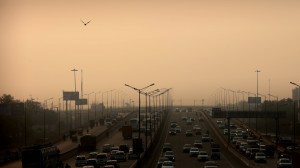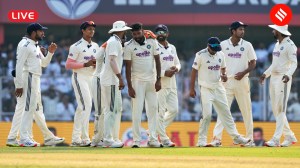Baba Siddique murder case: With a high-profile murder, shadow of 1990s looms over Mumbai
Amid fears of Mumbai returning to the “dark days of the past”, the police say having a proper strategy in place will ensure the Lawrence Bishnoi gang doesn’t spread its wings.
 In February this year, the local Akola police had arrested Lonkar with arms and found that he was directly in touch with Lawrence Bishnoi.
In February this year, the local Akola police had arrested Lonkar with arms and found that he was directly in touch with Lawrence Bishnoi.From gang members firing warning shots outside actor Salman Khan’s residence in April to the October 12 killing of former MLA Baba Siddique — both allegedly carried out at the behest of gangster Lawrence Bishnoi — the shadow of organised gangs that once terrorised Mumbai seems to be looming on the horizon after over two decades.
“It is after a long time in the city that such a killing by an organised gang has taken place,” says former Mumbai top cop Julio Ribeiro, adding that there appears to be an attempt on the part of the Lawrence Bishnoi gang to create fear, using which they can carry out their extortion activities.
Calling the warning shots fired outside Salman’s house as “stage one”, an IPS officer told The Indian Express, “With Siddique’s murder, stage two — that of fear mongering — has been activated. Bloodshed ensures that when others receive an extortion call, they are scared enough to part with their money easily.”
Calling the late 1990s a “dark period” for Mumbai, a former IPS said 101 businessmen were gunned in 1998, when organised crime in the city was at its peak. These killings, he says, dipped to 46 in 1999, 23 in 2000 and 12 in 2001, till a multi-pronged approach by the police helped ensure there was no gang-related murder from 2002 onwards. However, the Dawood gang continued to make extortion calls throughout this time.
Former Mumbai Police Commissioner D Sivanandan, credited with taking on the Mumbai underworld in the 1990s, told The Indian Express, “What is happening now cannot be compared to the 1990s. Back then, the underworld, which had been building up over the past several decades, had hit a crescendo. What is happening now could be the beginning of something similar. If this case (Siddique’s murder) is effectively tackled — and the Mumbai police are capable of doing that — this threat can be nipped in the bud.”
Lawrence Bishnoi, in jail since the past decade, has been gaining notoriety since his gang allegedly killed Punjabi singer Siddhu Moosewala in 2022 in Punjab. On June 6, 2022, a week after the singer’s murder, a threat letter was found on a bench on Mumbai’s Bandstand Promenade, where Salim Khan, script writer and actor Salman’s father, usually sat after his morning walk. The letter, which warned that Salman too would meet “Moosewala’s fate”, was signed off with the initials “LB” and “GB”. The police say these initials presumably stand for Lawrence Bishnoi and his Canada-based aide Goldy Brar.
The police believe that the Lawrence Bishnoi gang, which was mostly active in Punjab, Haryana, Delhi, Rajasthan and western Uttar Pradesh, is now attempting to fill the vacuum left behind since the Mumbai underworld gangs, led by Dawood Ibrahim, Chhota Rajan and Ravi Pujari, among others, were neutralised over the past 15 years.
Amid fears of Mumbai returning to the “dark days of the past”, the police say having a proper strategy in place will ensure the Lawrence Bishnoi gang doesn’t spread its wings.
According to former Mumbai Police Commissioner Sivanandan, bringing in stringent laws played a major role in eliminating the threat of the underworld. “Mumbai Police have ready-made laws, like the Maharashtra Control of Organised Crime Act (MCOCA), brought in during my time, which it can use to neutralise these elements,” he says. Under MCOCA, detainees find it difficult to get bail for several years, thus keeping them out of circulation for years.
Other stringent laws that have helped the police take on the underworld include the Maharashtra Prevention of Dangerous Activities (MPDA) Act.
Former top cop Ribeiro says, “The general principle is that the police create an equal amount of fear in the minds of the gangsters by ensuring they act in a strong manner.”
A retired officer says it all comes down to the government’s approach. “If the government is serious, the police have the resources to stub out the gang. With Mumbai Police not being given access to Lawrence Bishnoi, though he is behind bars (in Gujarat), this begs the questions as to how badly the government wants these gangs weeded out. It sends out the wrong message when a person who is causing law and order problems in parts of the country is being given some kind of patronage. The police will need the government’s backing if they want to ensure the city does not see the bloodbath it saw in the 1990s,” the officer adds.







